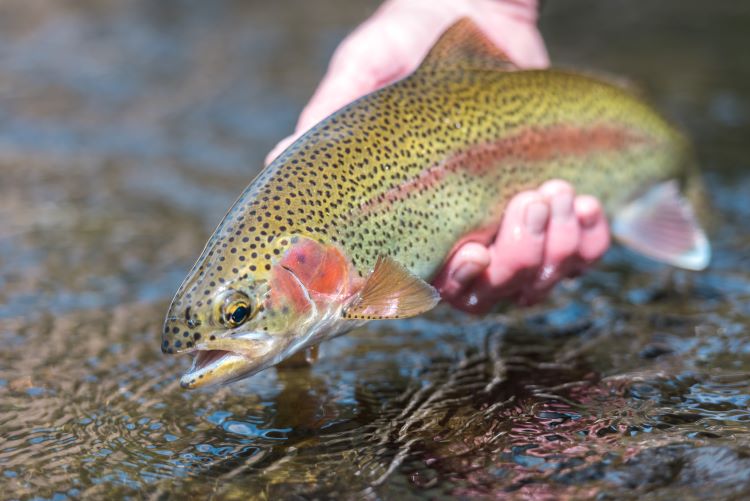Catch-and-release regulations are an important management tool in developing trophy fisheries, minimizing impact on non-target species, and protecting sensitive or at-risk fish populations. Even when retention is allowed, there is a growing trend among anglers to release, unharmed, any fish they land. By being prepared and mindful while out on the water, you can dramatically increase the survival and subsequent recapture rates of fish.
There are many factors that contribute to whether a released fish will survive unharmed, including angling duration, handling, hook location, type of fishing gear used, air exposure, and water temperature. The following tips are suggested best practices for handling and releasing your catch:
Tips for Proper Fish Handling
Reduce the angling duration by landing fish as quickly as possible. This is particularly important during warm- or low-water periods, when fish may be stressed from less than optimal habitat conditions. Use a fishing rod and reel, terminal tackle, and line with appropriate strength that will not unnecessarily extend the duration of the fight or excessively exhaust the fish.
Once at the surface, fish can either be netted or gently handled in the water while the hook is removed. Before landing the fish, wet your hands and the entire net bag thoroughly to reduce the loss of protective slime and scales. Use a net with fine, non-abrasive, and knotless rubber (preferred) or nylon mesh material.
Removing the Hook
To remove hooks, some handy tools to have on-board or in your fishing vest are haemostats (surgical pliers) or a pair of needle-nosed pliers. The latter can also be used to pinch down barbs.
All streams and rivers in our province, and many lakes, have a restriction to fishing with single barbless hooks, and these hooks are recommended for all catch-and-release fishing. While removing hooks, keep the fish and net in the water. Hooks deep in the throat or in the gill arches should be left in place, and the leader cut as close to the hook as possible. Most hooks will fall out within a couple of weeks. However, you should keep badly hooked or bleeding fish as part of your allowable catch.
Once the hook is out, support the fish by placing one hand under the pectoral fins (the first set of fins behind the head) and form a U-shape for the body to sit in. Because a fish’s organs and internal structures have evolved and adapted to being supported by water rather than being lifted and compacted, avoid compressing its abdomen. With your other hand, gently grasp the caudal peduncle or “wrist” (the narrow section just ahead of the tail) and, with both hands in place, cradle the fish gently below the surface of the water until it swims away on its own. If you’re fishing in a river, point the fish upstream into the current while reviving it; when the fish begins to struggle and swim normally, let it go.
Capturing Your Catch on Camera
If you want to take a picture of your catch, you should avoid lifting the fish out of the water for more than three seconds. Sensitive or vulnerable sport fish like wild salmon and steelhead should never be removed from the water. Take a shot of the fish in the water while holding it by its wrist, or fully supporting it with both hands. A fish destined for live-release should never be held vertically by the gills, or upside-down by the tail – both positions leave the body unsupported, and can cause serious damage to internal organs.
During times of severe environmental stress on fish (such as unusually low- or warm-water conditions), please consider minimizing the number of fish you catch and release.
Keeping Your Catch
If you plan to keep your catch, treat your fish humanely – dispatch it with a sharp blow to the top of the head, and clean it promptly (digestive enzymes can quickly spoil the flesh, making it taste bad). Since heat also accelerates spoilage, store your fish in a cool place, preferably in a cooler full of ice. Never harvest more fish than you need. Finally, to comply with the law, you must leave the head, tail and all fins on your catch until you return home.
Author: Staff, Freshwater Fisheries Society of BC
